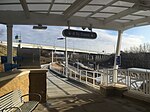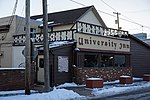Kingsbury Run
Kingsbury Run is the name that refers to an area on the southeast side of Cleveland, Ohio, located near the suburb of Shaker Heights. The area stretches westward through Kinsman Road. It contained a natural watershed that ran through East 79th Street and carried storm waters into the Cuyahoga River, draining them from the areas now known as Maple Heights and Warrensville Heights. Kingsbury Run was named after James Kingsbury (1767–1847), one of the earliest settlers in the Western Reserve, who became the first inhabitant of Newburgh in 1797. It is also the route through which the RTA Rapid Transit travels on its way to Public Square in downtown Cleveland. Kingsbury Run became notorious in the mid-1930s when an unidentified serial killer, the Cleveland Torso Murderer, used the area as a dumping ground for the dismembered remains of some of their first victims. In 1938, Eliot Ness directed police to raid the area. They evicted 300 individuals from the area and burned down approximately 100 shanty homes in a desperate attempt to find the killer.
Excerpt from the Wikipedia article Kingsbury Run (License: CC BY-SA 3.0, Authors).Kingsbury Run
Scotham Avenue, Cleveland
Geographical coordinates (GPS) Address Nearby Places Show on map
Geographical coordinates (GPS)
| Latitude | Longitude |
|---|---|
| N 41.4811625 ° | E -81.6767964 ° |
Address
Scotham Avenue 201
44113 Cleveland
Ohio, United States
Open on Google Maps






